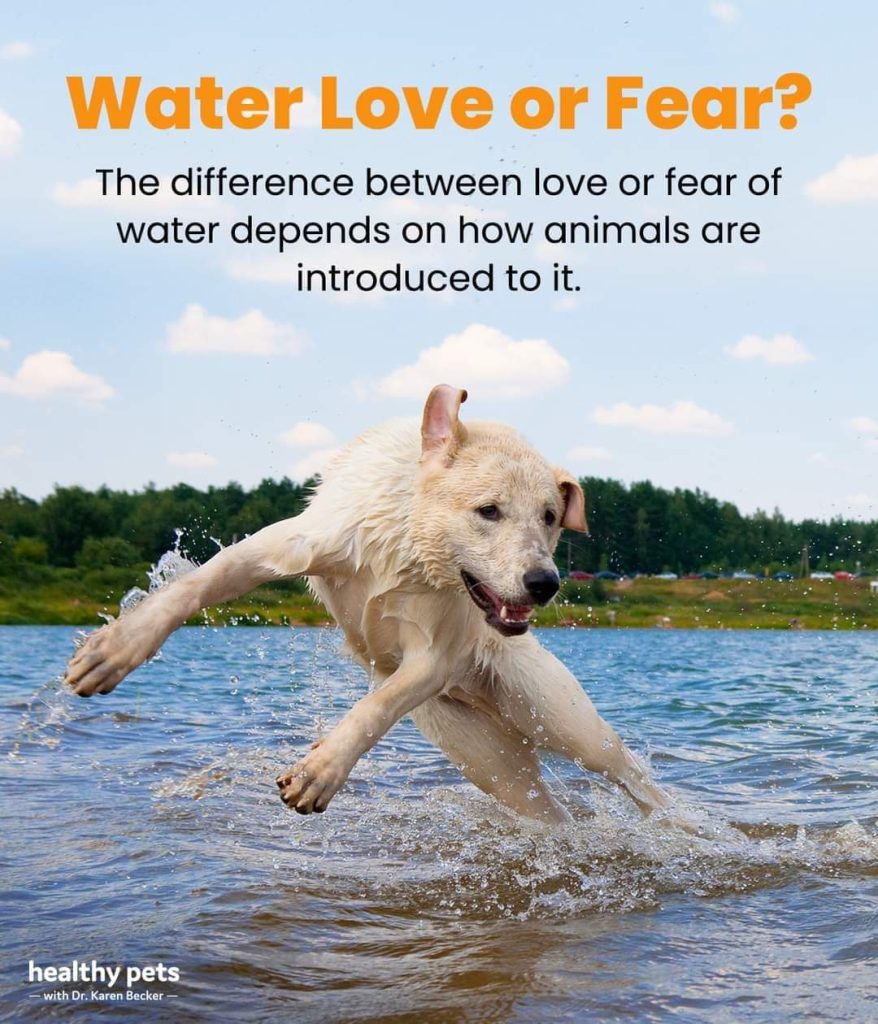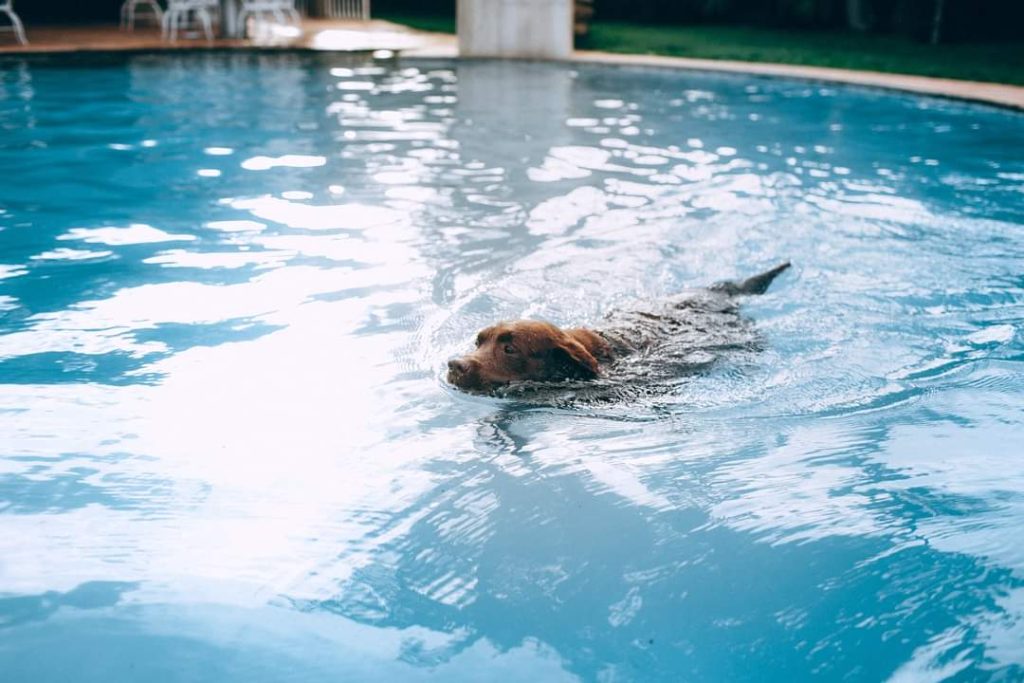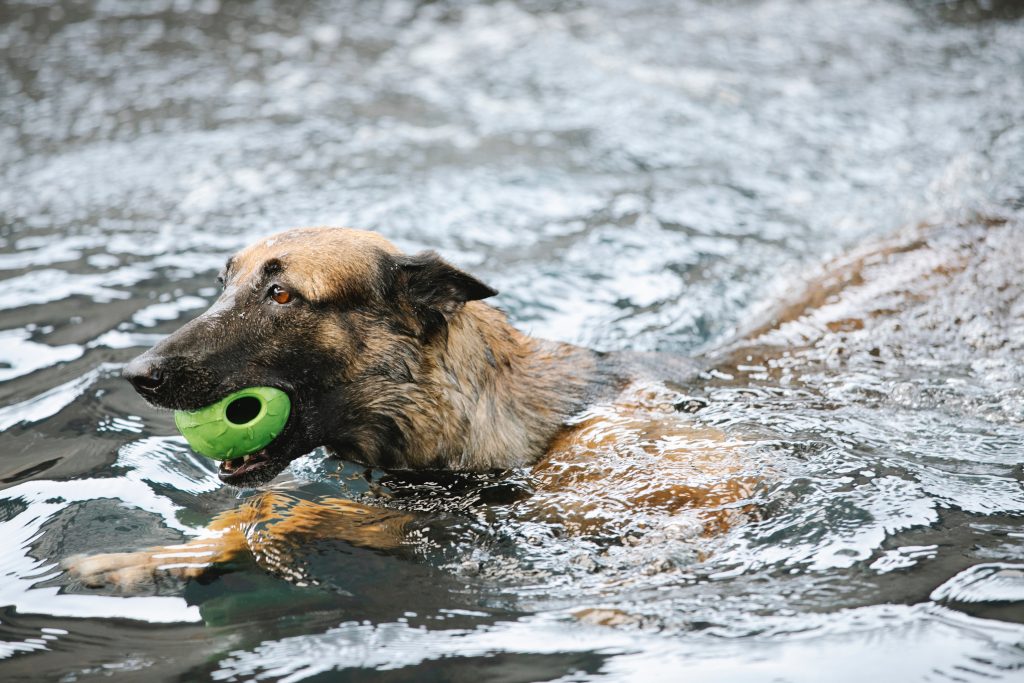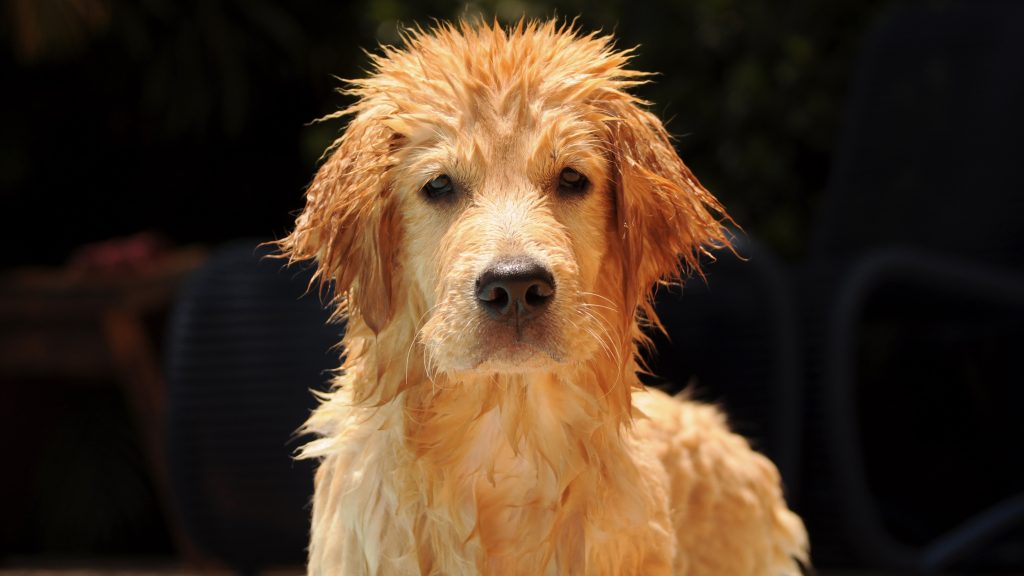
KEEPING YOUR PETS SAFE IN THE POOL AND AROUND OTHER WATER SOURCES.
Swimming is a great exercise for dogs, especially those with conditions like arthritis, and it is a great way to cool off during long summer days, but thousands of dogs and pets drown every year and that can be prevented.
Water, in its many forms, can be an enticing and refreshing element that both humans and their animal companions often find irresistible. Yet, as with any element, water can present its own set of risks and challenges, especially for our beloved pets.
Understanding the principles of keeping your pets safe in aquatic environments is essential for responsible pet ownership. In this article, we will explore the significance of water safety for pets, its potential hazards, and the measures you can take to ensure the well-being and enjoyment of your animal companions in and around water.

WHY IS WATER SAFETY IMPORTANT?
Water safety for pets is of paramount importance for several compelling reasons:
- Drowning Prevention – Just like humans, pets can drown in bodies of water. Whether it’s a swimming pool, a pond, a lake, or the ocean, it only takes a moment for an unsupervised pet to find themselves in a life-threatening situation. Proper water safety measures can prevent tragic accidents.
- Waterborne Hazard – Bodies of water can contain various hazards for pets, including strong currents, toxic algae, sharp debris, or even dangerous wildlife. Training and safety precautions help protect your pet from these potential dangers.
- Health and Hygiene – While swimming is an excellent form of exercise for many dogs, it’s important to ensure that they have access to clean and safe water. Stagnant or contaminated water can lead to health issues for your pet, such as infections or exposure to harmful bacteria.
- Comfort and Enjoyment – When pets are comfortable around water and know how to swim safely, they can enjoy aquatic activities, which can be a source of pleasure and mental stimulation. It can enhance their overall quality of life and provide them with a fun and enriching experience.
- Emergency Preparedness – In the event of an accidental fall into the water, your pet’s ability to stay calm and swim safely can make the difference between life and death. Basic water safety training ensures they know how to handle such situations and potentially save their own life.
- Travel and Adventures – If you love to travel with your pet, you’re likely to encounter different water-related scenarios. Whether it’s boating, camping near water, or beach vacations, teaching your pet water safety ensures they can join you on these adventures without undue risk.
- Strengthening the Bond – Training your pet in water safety fosters a deeper connection between you and your furry friend. It’s an opportunity to work together and build trust, which can enhance your relationship.

SOME DOG BREEDS & WATER
Breeds with water-resistant coats and webbing between their toes are typically strong swimmers. Some dog breeds that tend to love the water include Newfoundlands, standard poodles, the Portuguese water dog, and Labrador retrievers.
- Look at their physique – Brachycephalic breeds and other short-muzzled dogs, top-heavy breeds, and those with short legs, including bulldogs, pugs, Dachshunds, and boxers, generally have difficulty staying afloat.
- Size – Small breeds may also need assistance in the water, as they get easily chilled and some are frightened of the water.
- Age – Puppies and elderly dogs may also need extra help in the water.
LEARNING HOW TO SWIM
Some dogs are naturally good swimmers, while others need extra help to stay afloat. Your dog may take to the water instantly, or it could take several days of practice for your dog to swim. Be patient!
If your dog is a puppy, exposing them to water between the ages of 6 to 16 weeks can help them to get used to it and develop positive associations with being in the water.
Teaching your dog to swim is a multi-step process that should start slowly and gradually build up to spending more time in the water, going at a pace that your dog feels safe.
- Plan to accompany your dog in the water when teaching them to swim.
- With all pets start in a few inches of water just getting their feet wet, then slowly move to deeper water. Never force an animal into water and always look out for signs of anxiety or stress.
- When your dog starts swimming, support them under their midsection until they are confident and using all four limbs to swim.
Help your dog become a lifelong water lover by introducing them to water at a pace they’re comfortable with, safely building confidence and trust.

CHOOSING A SPOT TO SWIM
Dr. Judy Morgan gives the following advice when choosing a spot to swim:
- Swimming pools are best as they can be monitored, but some dogs also enjoy a dip in the sea or a stream.
- Avoid fast-flowing water, flooded rivers, reservoirs and canals.
- Watch out for any obstructions like fallen trees or branches that your dog could get caught on.
- Larger bodies of water may have designated swimming spots and warning signs, so pay attention to these.
- Ensure that you can guide them out of the water at a spot you can reach on foot to avoid stranding your pet.
Chlorinated water does carry certain risks, as do the disinfection byproducts that form when organic materials mix with chlorinated water. As a general rule, if you can make your outdoor pool relatively non-toxic, the benefits of allowing your pet to exercise in the water far outweigh the risks. An alternative to chlorine is to perform frequent maintenance shock treatments to kill algae.
AERCMN shares more about lake and beach dangers:
1. Parasites and bacteria
2. Swimming safety
3. Water intoxication
4. Salt water
5. Seaweed
6. Sand impaction
7. Hot surfaces
8. Picnic foods & foreign bodies
9. Fishing hooks
10. Sun protection
11. Heat and dehydration
SAFETY PRECAUTIONS
- Never assume all pets or all dogs can swim!
- Supervision is crucial, so keep an eye on your dog and call them back if they swim too far out.
- Don’t let your dog drink the salt water of the ocean or stagnant water in nature. Bring plenty of fresh, cool water for your dog to drink during swimming sessions. Keep a close eye to be sure they’re not consuming too much of the pool, ocean, or lake water. Water intoxication is a danger that may be associated with swimming when dogs are swallowing large amounts of water. Symptoms include loss of coordination, lethargy, bloating, vomiting, glazed eyes, excessive salivation, difficulty breathing, seizures, coma, and death. If you notice your dog is gulping water, insist on taking a break from swimming and water play.
- Some dogs may never be confident swimmers and will always need a doggy life jacket on when around the water.
- While your dog is learning to swim, you can attach a leash or long line to the life jacket (or to a harness) so you can pull your dog in if he gets distracted or cannot reach the shore on his own.
- Attach an alarm or emergency light to them in case they fall into a dangerous area of the water on hikes.
- Swimming is hard work, so be aware that your dog may tire quickly. Avoid having him swim out too far.
- If you have a backyard pool, install a ramp that your dog can use for an exit, and teach your pet to use it. Also, be sure to keep the pool area fenced and covered so your dog cannot fall in accidentally or jump in without supervision.
- Use animal-safe sunscreen for breeds who are prone to sunburn.
- When your dog is done swimming, give them a rinse with fresh water to remove chlorine, salt, bacteria, and other contaminants from their fur.
- Make sure you clean and dry their ears after a swim and remove wet collars to prevent hot spots.
- Look out for the signs of heat stroke and provide cool shade areas.
- Learn pet CPR for an emergency and save the emergency services number for the area you plan to visit.
- Check with your veterinarian before swimming if your pet has special needs or certain health risks.
If you intend to take your dog on the boat with you, I recommend reviewing AERCMN’s 10 safety tips for boating with dogs. If you have a pool, read more about the dangers it presents and how to prevent them.

Also, see tips for leaving your pets home alone.
In conclusion, water safety for pets is not just a matter of precaution; it’s an essential aspect of responsible pet ownership. The allure of water, combined with the curious nature of our animal companions, can lead to situations that demand our vigilance and care. By understanding the potential hazards and implementing the right safety measures, we can create an environment in which our pets can enjoy the water safely.
From the training and preparation needed for water-related activities to the importance of proper supervision and the value of life-saving equipment, we’ve explored some of the key elements of ensuring your pets are protected in and around water. Whether it’s a poolside playdate, a beach excursion, or a lakeside adventure, these guidelines are indispensable.
As you venture into the world of water safety for your pets, remember that preparation and vigilance are the keys to protecting their lives, well-being, and health. It ensures they can enjoy water-related activities safely and leads to a more fulfilling and enjoyable life for both you and your cherished animal companion.
Next week will look at having an emergency plan for your pets.
WHEN YOU KNOW BETTER, DO BETTER!
Sources: